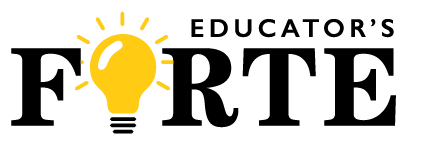In Part 1 of this series, we took a look at the benefits of targeted and personalized professional development for teachers. As we continue our exploration of effective teacher professional development, we’ll dig a little deeper to uncover the characteristics of what constitutes “good” professional learning opportunities.
All educators are familiar with the term pedagogy—the theories and methods that apply to how children learn. Andragogy on the other hand relates to how adults learn. K-12 educators are experts in pedagogy, but not necessarily in the principles of andragogy, yet often professional learning experiences are planned and led by classroom teachers.
In this blog our goal is to highlight some key principles of andragogy and how they specifically connect to effective professional learning for teachers

What is Andragogy?
Andragogy emphasizes that adult learners are self-directed and self-motivated, readily draw on their prior experiences when learning something new and prefer learning that is explicitly relevant and immediately applicable to their practice. As such, professional development for teachers should be designed to engage teachers in active, collaborative, and experiential learning opportunities that build upon their existing knowledge and experiences and provide them with practical tools and strategies that can be readily applied in their classrooms. By integrating the principles of andragogy, professional development becomes learner-centered, empowering teachers to take ownership of their learning and apply it directly to their teaching practice.
Key characteristics of andragogy in teacher professional development include:
Alignment with Teachers’ Needs: Professional development that is truly effective is customized to the needs of teachers. It takes into account their instructional goals, subject areas, student populations, and unique challenges they face in their classrooms. It is relevant, responsive, and tailored to their specific needs and contexts.
Sustained Focus: Professional development that has a lasting impact is not a one-time event, but a continuous and sustained process. The emphasis is on going deep instead of wide. It provides ongoing support, feedback, and resources to teachers, allowing them to deepen their understanding, practice new strategies, and reflect on their progress over time.
Embedded in Classroom Practice: Effective professional development connects theory with practice. It helps teachers apply what they have learned in training to their own teaching practices, receive feedback, and reflect on their implementation to make adjustments as needed. It supports teachers in integrating new knowledge and skills into their day-to-day routines.
Collaborative and Reflective: Professional development that promotes reflection, discussion, and collaboration among teachers can be highly effective. It encourages teachers to engage in meaningful conversations, share ideas, and collaborate with colleagues, leading to enhanced learning and professional growth.
Supported by School Leaders: The active involvement and support of principals, instructional coaches, and other school leaders is crucial for effective professional development. School leaders often set school-wide learning initiatives and provide the necessary resources for those initiatives. But they should also play a pivotal role in identifying individual teachers’ needs and supporting their personal growth goals with resources, ongoing feedback and support.
Research-Informed: Professional development that is based on current research findings, evidence-based strategies, and best practices is more likely to have a meaningful impact on teacher growth and student learning. It incorporates research-informed approaches that have been proven to positively impact student learning outcomes.
By focusing on these factors when planning for teacher professional development, leaders can empower teachers to continually enhance their instructional practices and positively impact student learning outcomes.
Stay tuned for Part 3 of this series, where we’ll take a look at alternatives to the traditional training workshop.

